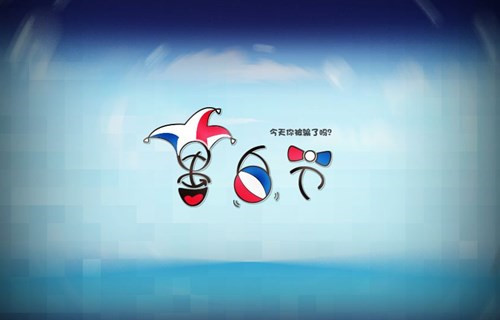双语:愚人节的历史你知道吗

4月1日是愚人节,许多国家的人都会在这一天戏弄自己的朋友为乐,被戏弄的人也不会当真,但是你知道愚人节的起源和历史吗?
April Fools’ Day, sometimes called All Fools’ Day, is one of the most light-hearted days of the year. Its origins are uncertain. Some see it as a celebration related to the turn of the seasons, while others believe it stems from the adoption of a new calendar.
愚人节(April Fools’ Day)有时又被称为“万愚节”,是一年中最无忧无虑的日子。愚人节的起源没有一个定论。一些人认为这是一个和季节交替有关的节日,而其他人则认为愚人节起源于新历法的采用。
New Year’s Day Moves
1、元旦日期变动。
Ancient cultures, including those of the Romans and Hindus, celebrated New Year’s Day on or around April 1. It closely follows the vernal equinox (March 20th or March 21st). In medieval times, much of Europe celebrated March 25, the Feast of Annunciation, as the beginning of the new year.
在包括古罗马和古印度在内的一些古文化中,人们一般都在4月1日左右庆祝新年,这时春分(3月20日或21日)刚刚过去不久。中世纪时,欧洲许多地区都会在3月25日这一天庆祝“天使报喜节(Annunciation)”,并将其作为新一年的开始。
In 1582, Pope Gregory XIII ordered a new calendar (the Gregorian Calendar) to replace the old Julian Calendar. The new calendar called for New Year’s Day to be celebrated Jan. 1. That year, France adopted the reformed calendar and shifted New Year’s day to Jan. 1. According to a popular explanation, many people either refused to accept the new date, or did not learn about it, and continued to celebrate New Year’s Day on April 1. Other people began to make fun of these traditionalists, sending them on "fool’s errands" or trying to trick them into believing something false. Eventually, the practice spread throughout Europe.
1582年,教皇格列高利十三世下令用一个新历法(格列高利历法)来代替旧的罗马历。新历法将元旦定于1月1日。根据一个流行的解释,当时许多人要么拒绝接受新历法、要么就根本不知道有这一回事儿,因此就继续在4月1日那一天庆祝新年。其他人就开始取笑这些守旧者,派他们去做一些“愚人的差事”、或者哄骗他们相信一些错误的东西。最终这种作法传遍了整个欧洲。
Constantine and Kugel
2、君士坦丁和库戈尔。
Another explanation of the origins of April Fools’ Day was provided by Joseph Boskin, a professor of history at Boston University. He explained that the practice began during the reign of Constantine, when a group of court jesters and fools told the Roman emperor that they could do a better job of running the empire. Constantine, amused, allowed a jester named Kugel to be king for one day. Kugel passed an edict calling for absurdity on that day, and the custom became an annual event.
波士顿大学历史学教授约瑟夫.博斯金提出了愚人节起源的另一种解释。他解释称愚人节在君士坦丁时期开始流行起来,当时一群宫廷小丑和弄臣对这位罗马皇帝说,在管理帝国方面他们能做得更好。君士坦丁觉得很有趣,于是就允许一个叫库戈尔的弄臣当了一天的国王。库戈尔在那一天通过了一份名为《荒谬》的法令,而此后这一习俗就成为了一年一度的盛事。
"In a way," explained Prof. Boskin, "it was a very serious day. In those times fools were really wise men. It was the role of jesters to put things in perspective with humor."
博斯金教授解释称:“在某种程度上,这是非常严肃的一天。在那个时代,小丑其实是非常有智慧的人。是因为弄臣这个角色把整个事件都幽默化了。”
This explanation was brought to the public’s attention in an Associated Press article printed by many newspapers in 1983. There was only one catch: Boskin made the whole thing up. It took a couple of weeks for the AP to realize that they’d been victims of an April Fools’ joke themselves.
1983年多家报社转载了美联社的这篇文章,之后这个解释就引起了公众的注意。但是却有一个问题:整件事其实都是博斯金编造的!美联社花了好几周才意识到,这一切原来只是博斯金的愚人节把戏!
Spring Fever
3、春日狂欢。
It is worth noting that many different cultures have had days of foolishness around the start of April, give or take a couple of weeks. The Romans had a festival named Hilaria on March 25, rejoicing in the resurrection of Attis. The Hindu calendar has Holi, and the Jewish calendar has Purim. Perhaps there’s something about the time of year, with its turn from winter to spring, that lends itself to lighthearted celebrations.
值得注意的是,许多不同文化都在4月初前后有愚弄人的节日,它们往往历时几天或几周。罗马人在3月25日有一个名为“嬉乐节(Hilaria)”的节日,在这一天欢庆神祇阿提斯的复活。印度教历法里有胡里节,犹太教历法里有普林节。也许这些节日的起源还和时间有关系,因为正直冬春交替的日子,所以人们就在这时候来一场轻松愉快的庆祝活动。
Observances Around the World
4、世界各地的愚人节庆祝活动。
April Fools’ Day is observed throughout the Western world. Practices include sending someone on a "fool’s errand," looking for things that don’t exist; playing pranks; and trying to get people to believe ridiculous things.
整个西方世界都会过愚人节。一般的作法包括让某人去做“愚人的差事”——让他寻找某些不存在的东西、恶作剧、或者哄骗别人相信荒诞不经的事情。
The French call April 1 Poisson d’Avril, or "April Fish." French children sometimes tape a picture of a fish on the back of their schoolmates, crying "Poisson d’Avril" when the prank is discovered.
法国人称呼愚人节为“鱼人节(Poisson d’Avril)”。法国孩子们有时会在同学的背后贴一张鱼的图片,当恶作剧被发现之后就大喊“鱼人节”。
